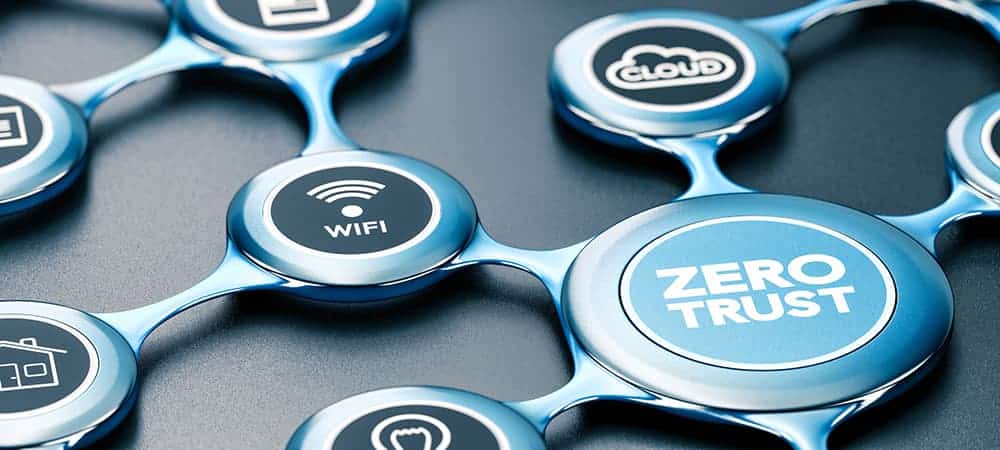It may seem strange to talk about cybersecurity in terms of “zero trust.” After all, if you can’t trust your systems and applications, why are you using them? But the term actually refers to a cybersecurity best practice that applies the basic concept “Never trust, always verify.”
Under the zero-trust security model, no user is trusted with full access to the network just because they’re able to log in. Instead, every user is assumed to be potentially compromised, and the network is designed to require identity and device authentication throughout the network, not just at the perimeter. This necessitates multiple layers of protection:
- Robust user identification, such as verified passwords, multi-factor authentication (MFA), and single sign-on (SSO), to limit network access to authorized users.
- Strong data governance, including data discovery, classification, and management; data protection and access policies; and data loss prevention practices, to help identify and safeguard sensitive data.
- Enterprise-wide visibility to prevent, detect, and mitigate security breaches, using techniques like discovery and categorization of managed and unmanaged assets, ongoing data and asset inventory, advanced cyber-terrain mapping, and continuous assessment of endpoint security.
- Segmentation to protect workflows and critical resources by isolating them.
- Dynamic threat monitoring leveraging threat intelligence-driven tools to spot and respond to advanced threats and anomalies in real time.
- Risk-aware access controls that use data protection and access policies to grant users the minimum access required to do their jobs (a/k/a “least privilege”), and that adjust access based on changes in risk.
The time for zero trust is ripe
The costs of cybersecurity breaches are higher than ever, and the COVID-19 pandemic has accelerated the trend toward a more mobile and remote workforce. Either one of these is reason enough to adopt the zero-trust model; the combination of the two is making it an imperative, allowing you to:
- provide a “single source of truth” for user identities
- protect company data
- increase control in a cloud environment – for example, by securing all communications end-to-end no matter where users are located
- lower the risk of breaches while detecting them faster
- simplifying compliance audits for both security (SOX IT General Control, SEC/FINRA, etc.) and privacy (CCPA, GDPR, etc.) regulations
- monitor threats in real time to ensure your architecture is trustworthy
Implementing zero trust
The question most companies face is how to adopt a zero-trust model cost-effectively and with minimal disruption. They need to establish and verify trust across all five pillars of zero trust architecture – device, user, application, data, and transport/ session, before allowing access to any user or device. Then they can expand visibility and apply analytics to further increase control.
The benefit, especially for small and midsize companies, is enhanced user satisfaction. Because zero trust leverages orchestration and automation, it simplifies and accelerates the user experience at every stage, from onboarding to remote work and work from home. However, many smaller businesses lack the IT expertise to implement a zero-trust architecture, either in specific strategic areas or across the entire organization.
Xantrion’s IT and cybersecurity experts are experienced in providing and managing a portfolio of solutions that addresses all five pillars of zero trust, creating a trusted infrastructure capable of delivering automation, orchestration, visibility, and analytics to and from any cloud, application, device, and user securely and at scale.
If you’re interested in learning more, read about Xantrion’s zero trust cybersecurity program on our website and contact us for help with implementation. If you’re already a Xantrion customer, ask your vCIO for more information!

